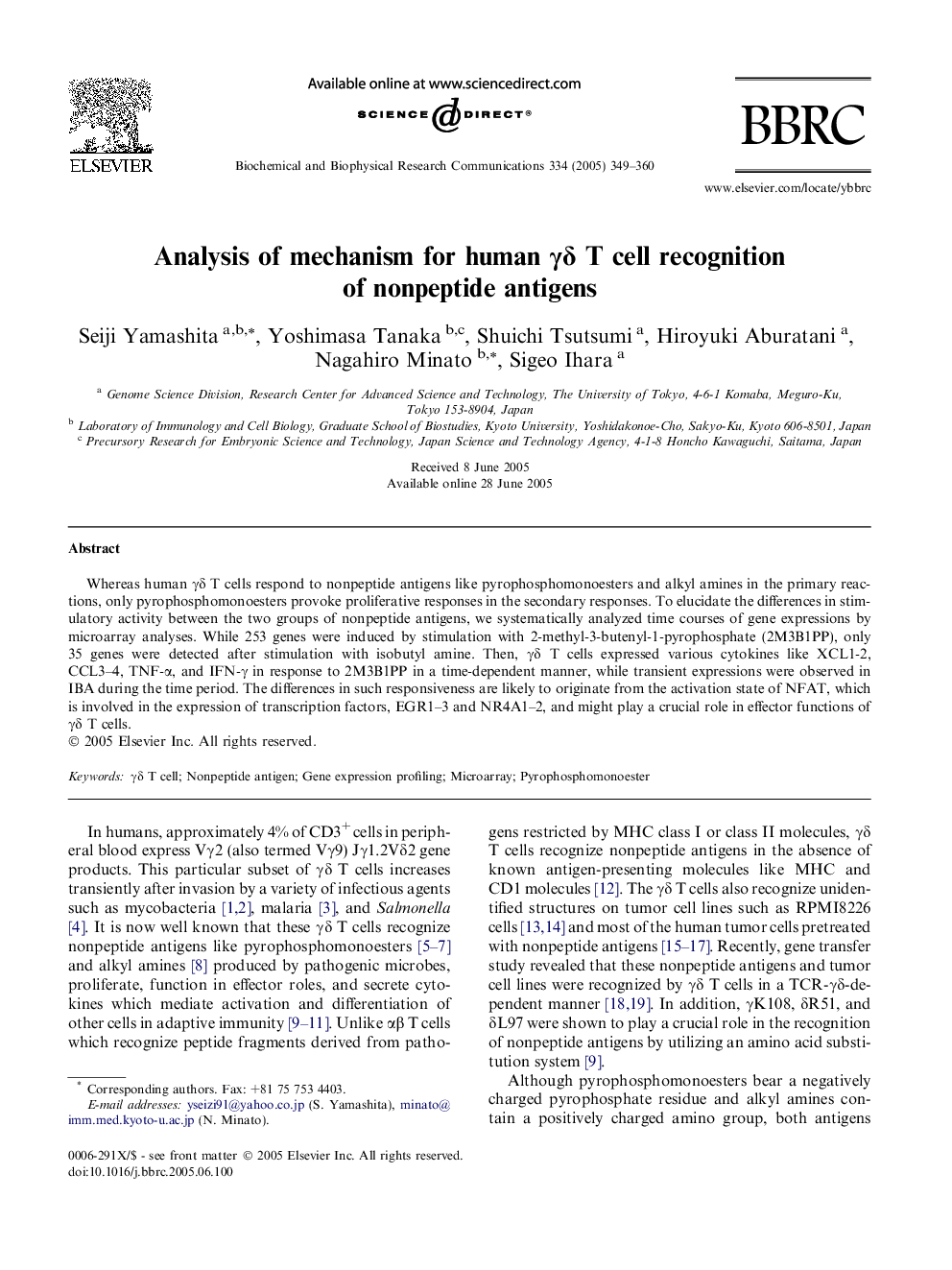| Article ID | Journal | Published Year | Pages | File Type |
|---|---|---|---|---|
| 10769173 | Biochemical and Biophysical Research Communications | 2005 | 12 Pages |
Abstract
Whereas human γδ T cells respond to nonpeptide antigens like pyrophosphomonoesters and alkyl amines in the primary reactions, only pyrophosphomonoesters provoke proliferative responses in the secondary responses. To elucidate the differences in stimulatory activity between the two groups of nonpeptide antigens, we systematically analyzed time courses of gene expressions by microarray analyses. While 253 genes were induced by stimulation with 2-methyl-3-butenyl-1-pyrophosphate (2M3B1PP), only 35 genes were detected after stimulation with isobutyl amine. Then, γδ T cells expressed various cytokines like XCL1-2, CCL3-4, TNF-α, and IFN-γ in response to 2M3B1PP in a time-dependent manner, while transient expressions were observed in IBA during the time period. The differences in such responsiveness are likely to originate from the activation state of NFAT, which is involved in the expression of transcription factors, EGR1-3 and NR4A1-2, and might play a crucial role in effector functions of γδ T cells.
Related Topics
Life Sciences
Biochemistry, Genetics and Molecular Biology
Biochemistry
Authors
Seiji Yamashita, Yoshimasa Tanaka, Shuichi Tsutsumi, Hiroyuki Aburatani, Nagahiro Minato, Sigeo Ihara,
